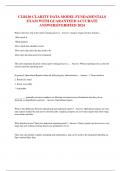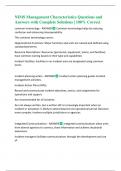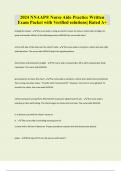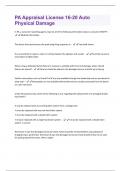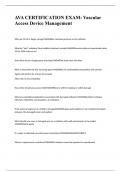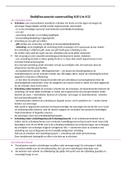Exam (elaborations)
CLR110 CLARITY DATA MODEL FUNDAMENTALS EXAM WITH GUARANTEED ACCURATE ANSWERS|VERIFIED 2024
- Module
- Institution
What is the first step in the report writing process? - Answer- Analyze request for key features... -Who needs it -What purpose -How much data should it return -How up to date does the data need to be -How does the data need to be formatted The most important decision of the report writing ...
[Show more]
